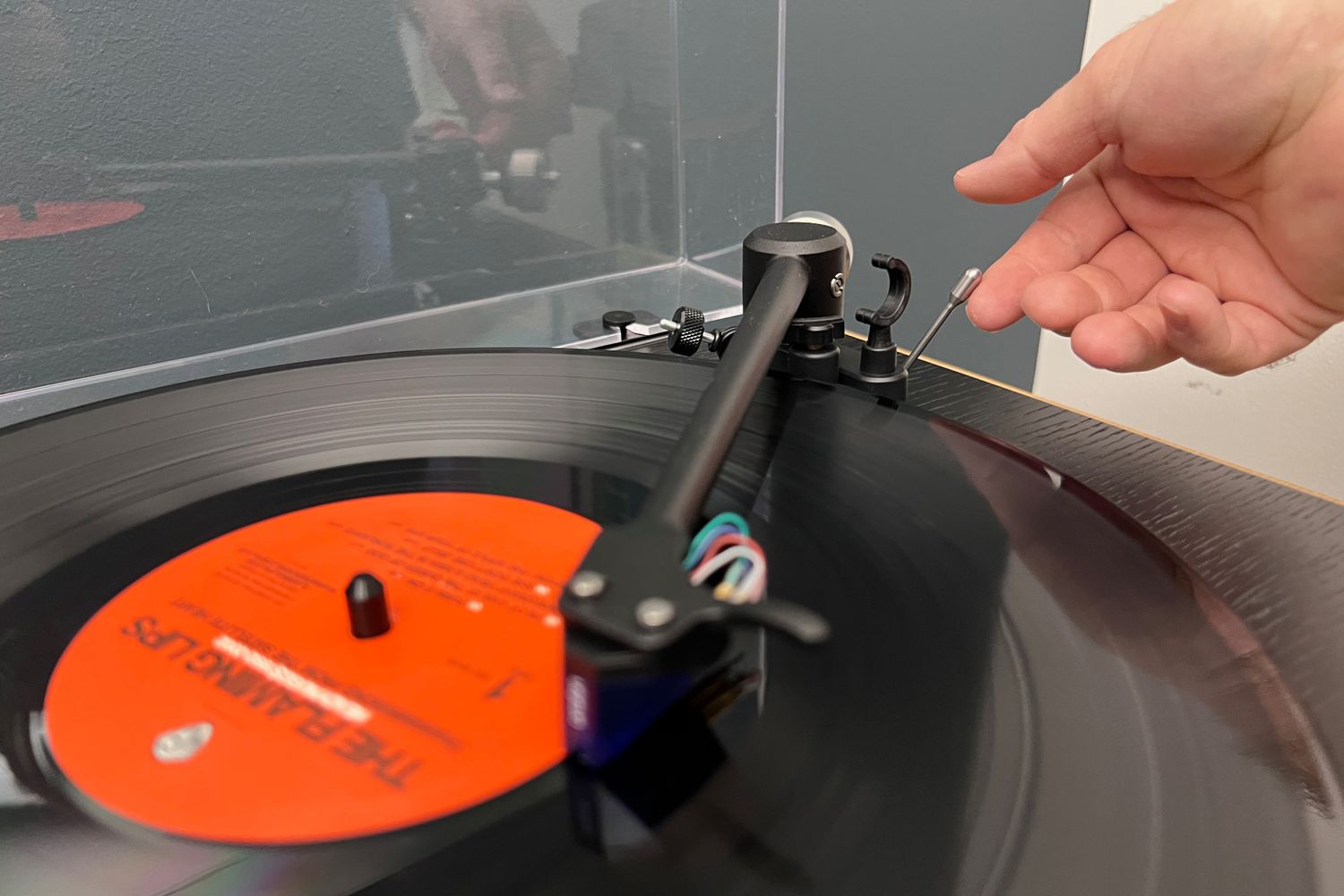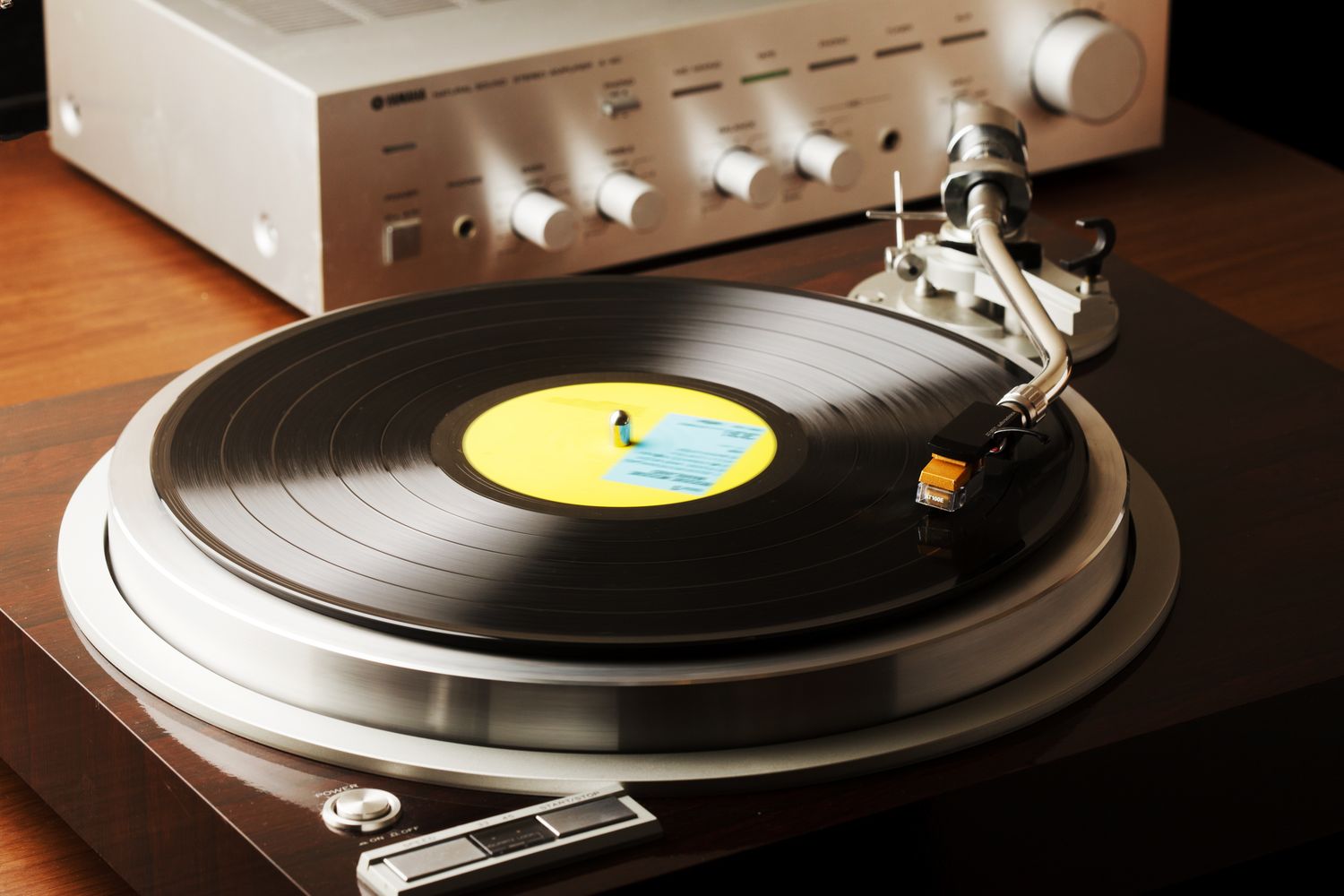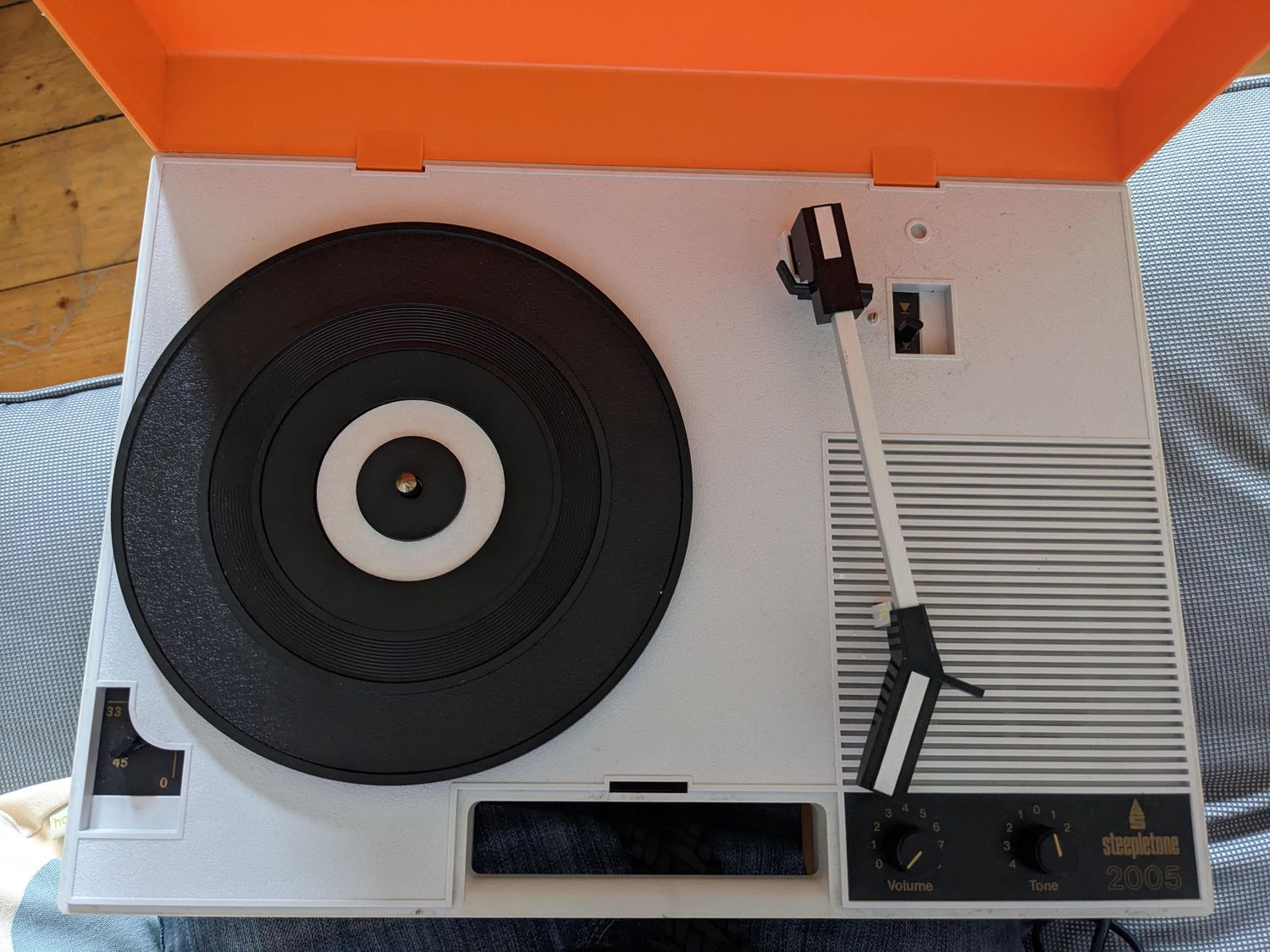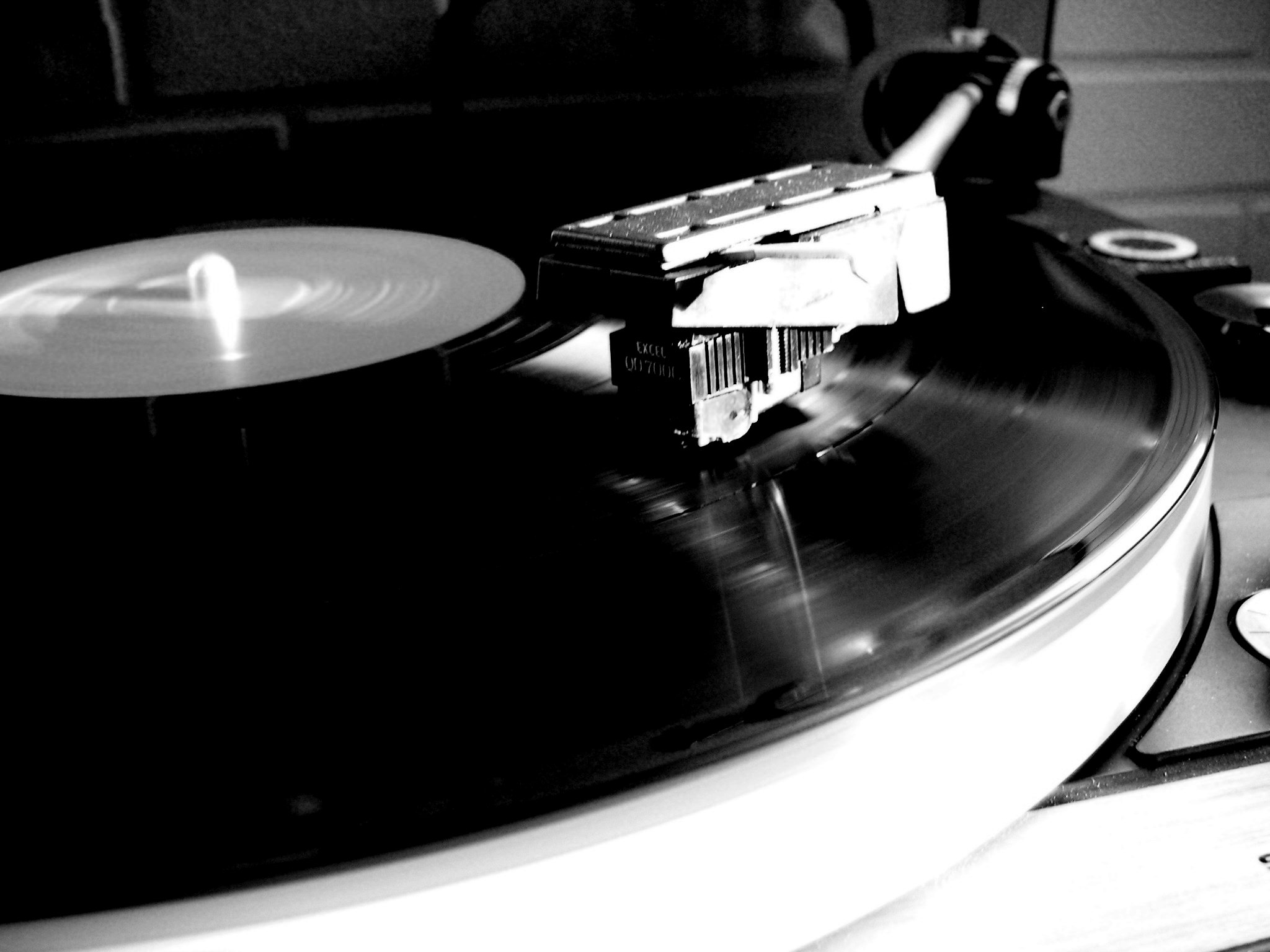Home>Devices & Equipment>Turntable>What Is A Cue Lever On A Turntable


Turntable
What Is A Cue Lever On A Turntable
Modified: January 22, 2024
Discover the significance of a cue lever on a turntable, an essential tool for DJs and vinyl enthusiasts. Enhance your turntable experience with this versatile accessory.
(Many of the links in this article redirect to a specific reviewed product. Your purchase of these products through affiliate links helps to generate commission for AudioLover.com, at no extra cost. Learn more)
Table of Contents
Introduction
When it comes to enjoying vinyl records, there’s nothing quite like the experience of using a turntable. These classic music players not only offer high-quality audio but also allow listeners to interact with their music in a unique way. And one essential component of a turntable that facilitates this interaction is the cue lever.
The cue lever, also known as the tonearm lift or arm lifter, is a mechanism found on most modern turntables. It serves the important function of raising and lowering the tonearm, which holds the cartridge and stylus, allowing for precise placement and protection of the vinyl record.
Whether you are a seasoned audiophile or just starting your vinyl journey, understanding the cue lever’s purpose and how to use it correctly is essential for preserving your records and enjoying the best sound possible.
In this article, we will delve into what a cue lever is, its purpose, how it works, and the different types available. We will also provide some tips on how to use a cue lever effectively.
So sit back, put on your favorite vinyl, and let’s explore the world of cue levers on turntables!
Definition of a Cue Lever
A cue lever is a mechanical component found on turntables that allows for precise control when lifting and lowering the tonearm. The cue lever is typically located on the side or front of the turntable and is operated by a lever or button.
When you activate the cue lever, it activates a mechanism that raises the tonearm, lifting the stylus away from the record’s surface. This action helps to prevent scratching or damaging the vinyl record when placing or removing it on the turntable.
Once the cue lever is engaged, the tonearm will remain in its lifted position until you manually release it, allowing you to easily position the stylus at the desired starting point on the record.
The cue lever is an integral part of the turntable setup, especially when it comes to playing delicate or valuable records. It provides a convenient and safe way to handle vinyl records without the risk of accidental damage.
Overall, the cue lever serves as a helpful tool for vinyl enthusiasts, allowing for precise placement of the stylus and ensuring that the needle doesn’t accidentally come into contact with the record’s surface when not in use.
Purpose of a Cue Lever
The primary purpose of a cue lever on a turntable is to provide a controlled and precise way to lift and lower the tonearm, which holds the cartridge and stylus. Let’s explore the various reasons why the cue lever is an essential component of a turntable.
1. Protection of Records: One of the key purposes of the cue lever is to protect your vinyl records from damage. By using the cue lever to raise the tonearm, you can prevent the stylus from coming into contact with the record’s surface when not in use. This helps to prevent accidental scratches or skips, ensuring the longevity of your vinyl collection.
2. Preservation of Stylus: The cue lever also plays a crucial role in preserving the lifespan of the stylus. By lifting the tonearm with the cue lever, you avoid the friction and wear that would occur if the stylus were to remain in constant contact with the record. This helps to maintain the clarity and quality of your audio playback over time.
3. Precise Placement: Another purpose of the cue lever is to allow for precise placement of the stylus on the record. When you activate the cue lever, the tonearm is lifted, allowing you to position the stylus at the desired starting point without the risk of accidentally touching or dragging it across the record’s grooves. This is especially useful when cueing up a specific track or section of a song.
4. Convenience: Using a cue lever adds convenience to your turntable setup. Instead of manually lowering and lifting the tonearm, which can be tricky and potentially lead to mishaps, the cue lever offers a simple and reliable mechanism for controlled movement. It makes the process of handling and cueing up records more effortless and enjoyable.
Overall, the cue lever is an essential feature of a turntable, serving multiple purposes including record protection, stylus preservation, precise placement, and convenience. By using the cue lever correctly, you can ensure a seamless and enjoyable vinyl listening experience.
How Does a Cue Lever Work?
The cue lever on a turntable may seem like a simple mechanism, but it’s important to understand how it works to effectively use it and preserve your records. Let’s take a closer look at the inner workings of a cue lever.
When you activate the cue lever, it engages a system of gears and levers inside the turntable. These internal mechanisms work together to lift the tonearm, which holds the cartridge and stylus, off the surface of the record.
Typically, the cue lever is connected to a hydraulic or hydraulic-like system, which allows for smooth and controlled movement. When you press or push the lever, it initiates the lifting action, raising the tonearm in a gentle and gradual manner.
The cue lever is designed to hold the tonearm in its elevated position until you manually release it. This feature allows you to precisely position the stylus on the desired starting point of the record without any contact between the stylus and the record surface.
When the cue lever is released, the internal mechanism slowly lowers the tonearm back onto the record, guided by the tonearm rest or cueing platform. This ensures a smooth and controlled descent of the stylus onto the vinyl, minimizing any potential impact or damage.
It’s important to note that the operation of a cue lever may vary slightly depending on the turntable model or brand. Some turntables may have additional features or adjustments to fine-tune the cueing process, such as the ability to adjust the cueing speed or height of the tonearm lift. It’s always a good practice to consult the user manual of your turntable to fully understand its specific cue lever functionality.
Overall, the cue lever operates on a series of gears and levers, providing controlled and gentle movement of the tonearm to protect your records and stylus. Understanding how the cue lever works allows you to make the most of this essential feature and ensure optimal performance and longevity for your vinyl collection.
Importance of Using a Cue Lever
Using a cue lever on your turntable is of utmost importance for several reasons. Let’s explore why utilizing a cue lever is crucial and how it benefits your vinyl playing experience.
1. Preservation of Records: Vinyl records are delicate and can easily be damaged if mishandled. By using a cue lever, you can prevent accidental scratches, skips, and other forms of damage that can occur when the needle comes into contact with the record’s surface. This preservation ensures the longevity and quality of your vinyl collection.
2. Protection of Stylus: The cue lever plays a vital role in protecting your stylus. By using the cue lever to lift the tonearm, you avoid unnecessary wear and tear on the stylus tip. The stylus can be quite fragile, and by keeping it elevated when not in use, you reduce the risk of damage or premature wear, ensuring optimal sound quality and accuracy.
3. Accurate Cueing: The cue lever allows for accurate cueing of the stylus onto the desired starting point of a record. It provides a controlled and precise way to position the stylus, helping you avoid accidental misplacement or scratching. This is particularly important when playing specific tracks or specific sections of a song.
4. Ease of Use: Using a cue lever adds convenience and ease to your turntable setup. Instead of manually lowering the tonearm onto the record, which requires careful attention and can be prone to mistakes, the cue lever provides a straightforward mechanism for controlled lifting and lowering of the tonearm. This makes handling and cueing up records more effortless and enjoyable.
5. Enhanced Listening Experience: By using a cue lever effectively, you can enhance your overall listening experience. Precisely placing the stylus on the record ensures optimal sound quality, accuracy, and playback performance. It eliminates the risk of damaging the record or producing disruptive noises, allowing you to fully immerse yourself in the music.
Using a cue lever on your turntable is not only important for the preservation of your records and stylus but also enhances the ease and enjoyment of your vinyl listening experience. By utilizing this essential feature, you can ensure the longevity of your collection and savor the rich sound that vinyl records offer.
Different Types of Cue Levers
While the basic function of a cue lever is to lift and lower the tonearm on a turntable, there are different types of cue levers that offer varying features and mechanisms. Each type has its unique characteristics and benefits. Let’s explore some of the most common types of cue levers:
-
Standard Lever:
The standard lever is the most common type of cue lever found on turntables. It is a simple lever that lifts and lowers the tonearm with a smooth and controlled movement. This type of cue lever is typically found on entry-level and mid-range turntables, providing basic functionality for cueing up records.
-
Hydraulic Cue Lever:
The hydraulic cue lever is a more advanced version that uses a hydraulic mechanism to control the lifting and lowering of the tonearm. This type of cue lever offers a smoother and more precise movement, minimizing any potential bouncing or sudden drops of the tonearm. Hydraulic cue levers are often found on high-end turntables, providing enhanced control and accuracy.
-
Electric Cue Lever:
The electric cue lever is a motorized version that utilizes an electric mechanism to lift and lower the tonearm. This type of cue lever allows for hands-free operation with the press of a button. Electric cue levers are often found on automatic turntables, where the tonearm can be automatically lifted and positioned onto the record by the push of a dedicated button.
-
Adjustable Cue Lever:
The adjustable cue lever offers additional customization options for the user. It allows for adjustments in terms of the lift height, cueing speed, or arm damping, providing more control over the cueing process. Adjustable cue levers are often found on high-end turntables or in specialized DJ setups, catering to the specific needs and preferences of the user.
While these are some of the common types of cue levers, it’s important to note that not all turntables may have multiple options available. The type of cue lever you encounter will depend on the specific model and brand of your turntable. Regardless of the type, the cue lever serves the essential function of lifting and lowering the tonearm, ensuring accurate playback and protection of your records.
Tips for Using a Cue Lever Effectively
The cue lever is an essential tool for properly handling and cueing up records on a turntable. To make the most of this feature and ensure optimal performance, here are some tips for using a cue lever effectively:
- Handle with Care: When using the cue lever, always handle it gently and avoid applying excessive force. This will help prevent any damage to the lever mechanism and ensure its longevity.
- Engage Slowly: When activating the cue lever to lift the tonearm, do so in a slow and controlled manner. This ensures smooth movement and prevents any sudden shifts or drops of the tonearm, minimizing the risk of damaging the stylus or record.
- Position Precisely: Take your time to accurately position the stylus on the desired starting point of the record. Use the cue lever to lift the tonearm, then gently move it horizontally until the stylus is aligned with the grooves where you want to begin playing.
- Release Carefully: When releasing the cue lever to lower the tonearm onto the record, do it slowly and gently. This allows for a smooth descent of the stylus onto the vinyl, minimizing any potential impact or damage. Avoid releasing the cue lever abruptly, as this can lead to sudden drops or vibrations.
- Avoid Dragging: Never drag the stylus across the record’s surface when using the cue lever. This can cause unnecessary wear and tear on both the stylus and the record. Instead, always lift the tonearm and move it to the desired location without any contact between the stylus and the record.
- Practice Precision: Practicing precision when using the cue lever is key. Take the time to familiarize yourself with the movement and operation of the cue lever on your particular turntable. With practice, you’ll become more adept at accurately positioning the stylus and smoothly executing the cueing process.
- Read the Manual: Every turntable model may have its specific guidelines and recommendations for using the cue lever. Refer to the user manual of your turntable for any instructions or tips provided by the manufacturer to ensure proper use of the cue lever feature.
By following these tips, you can make the most of your cue lever and ensure precise, safe, and effective handling of your vinyl records. Good cueing technique not only helps protect your records and stylus but also enhances your overall listening experience.
Conclusion
The cue lever is an integral component of a turntable, providing functionality and control when lifting and lowering the tonearm. Its purpose is to protect your records, preserve the stylus, and ensure accurate cueing for an optimal vinyl listening experience.
We explored the definition and purpose of a cue lever, understanding how it works to lift and lower the tonearm without damaging the record or stylus. We also delved into the importance of using a cue lever, highlighting the benefits of record preservation, stylus protection, accurate cueing, and convenience.
Furthermore, we discussed different types of cue levers, including the standard lever, hydraulic cue lever, electric cue lever, and adjustable cue lever. Each type offers unique features and benefits, catering to different needs and preferences.
To use a cue lever effectively, we provided several tips to ensure proper handling, precise positioning, and controlled release of the tonearm. By following these tips and consulting your turntable’s user manual, you can optimize the performance of your cue lever and enjoy an enhanced vinyl listening experience.
In conclusion, the cue lever is a vital tool for every vinyl enthusiast. Its role in protecting records, stylus, and ensuring accurate cueing cannot be overstated. By understanding and utilizing the cue lever effectively, you can elevate your vinyl listening experience and appreciate the magic of analog music in all its glory.











